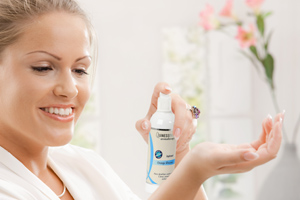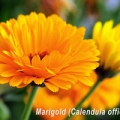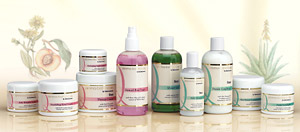Hydrosols – What They Are And How To Use Them
 Those of you who have been interested in aromatherapy for any length of time will have probably heard about hydrosols and have perhaps already tried these amazing healing waters in aromatherapy treatments.
Those of you who have been interested in aromatherapy for any length of time will have probably heard about hydrosols and have perhaps already tried these amazing healing waters in aromatherapy treatments.
If you are one of these people then you will know how valuable they can be, and why the author Jeanne Rose refers to hydrosols as the ‘homeopathy of aromatherapy’.
If you’ve yet to discover their healing powers, then this article is just for you. Hydrosols are safe, ‘ready to use’ aromatherapy products that can be used to care for the skin, revive and refresh flagging energy levels, as well as soothe and calm emotions. All at the same time!
How are hydrosols made?
A hydrosol is really a by-product that is left over after the process of obtaining an essential oil through steam distillation, although sometimes they are distilled specifically for the hydrosol, rather than for the essential oil. Normally when essential oils are extracted from plants by steam distillation not all of the aromatic and healing principles held within them are actually carried over to the distilled oil. Certain constituents in plants are hydrophilic, which means they dissolve in water and so they can’t be captured by the steam-distillation process.
Instead, these hydrophilic constituents are absorbed into the steam that is used to distil the essential oil, and this steam later condenses back into water which is called distillate or condensate water. This water is now made up of small quantities of essential oil plus many of the water-soluble parts of the plant, which means it actually contains a wider-range of therapeutic properties than the essential oil. In aromatherapy, we call this a hydrosol, hydrolate or flower water.
History of hydrosols
This combination of essential oil and water-soluble botanical extracts is what makes hydrosols so effective, since they are packed with more active principles than the essential oil alone, plus they offer a safe and convenient way to deliver a wide range of therapeutic and cosmetic benefits. Many people are surprised to learn they have been used for their healing powers since ancient times, actually pre-dating the use of essential oils. The ancient Egyptians, Greeks and Romans all used hydrosols for their therapeutic and aesthetic benefits along with their infusions and unguents for health and beauty. They made them by simply soaking plant material in boiling water to absorb their healing properties – simple but effective.
After the art of distillation was developed it was used specifically for the purpose of producing these aromatic waters with less attention focussed on the precious essential oil extracted in the process. Precisely when distilled essential oils first became popular in Europe is not known, but a renowned publication called ‘Liber De Arte Distillandi’ written by Hieronymus Brunschwig in Strassburg 1507 AD makes reference to only 4 essential oils. However, over time essential oils slowly became more popular and the use of hydrosols fell out of favour.
Using hydrosols in aromatherapy
The great thing about hydrosols is their versatility and ease of use, plus when you use them they give you a wonderful uplifting boost. When included in your skin care regimen, lavender, rose and orange blossom (neroli) hydrosols are fantastic for skin hydration since they can be sprayed with an atomiser directly on to the skin. Lavender hydrosol will cool hot and sensitised skin after too much exposure to the sun, as well as delivering a soothing, comforting and healing treatment. Hydrosols can be used after shampooing to condition and add shine to hair, and rosemary hydrosol is perfect for this.
If you suffer from puffy, under-eye circles then there is no better remedy than Roman chamomile hydrosol. Soak two cotton wool pads with the hydrosol and cover each closed eye for around 5 minutes while they work their magic. During the treatment you may feel your skin tingling but this is normal. Remove the eye pad’s after 5 minutes and rinse off the hydrosol completely. Your eyes will feel revived, refreshed and alert, and you should see an impressive reduction in puffiness. In fact, regular use of this hydrosol can help diminish those dreaded dark circles that sometimes develop over the years too.
However, a word of warning; some hydrosols such as Roman and German chamomile do not have a pleasant smell! They both possess an earthy, musty fragrance that is unlike the essential oil, and newbie’s often ask whether these hydrosols have gone ‘off’! In fact, true hydrosols hardly ever smell like the equivalent essential oil, because the characteristic smell of the plant is what was distilled to produce the essential oil.
Only a small amount of essential oil was left behind in the hydrosol with the major part of its aroma being made up of water-soluble components that smell quite different to the oil. But once you have experienced the amazing benefits of hydrosols you will soon learn to accept their different aroma! Fortunately, frankincense, lavender, geranium, peppermint and rosemary hydrosols all smell much more as you would expect them to be, with orange flower and rose being almost the same as their essential oil counterparts.
Cooling, soothing and calming hydrosols
Hydrosols can be used anytime as a cooling body mist, and they really come into their own during the hot summer weather. The most cooling of all hydrosols is peppermint, and a quick spray on tired and aching feet feels like heaven after you’ve been on a long walk! During a hectic or busy day when your energy levels begin to drop just a few sprays of a refreshing hydrosol such as orange flower, rose or geranium really revives you.
To calm a restless baby add a few tablespoons of lavender or geranium hydrosol into their warm bathwater. This can be particularly beneficial if your baby is also suffering from nappy rash or eczema, because the soothing properties of these hydrosols can calm the irritation as well as speeding up the process of healing. Hydrosols are perfectly safe to use on young children because they only contain a tiny amount of essential oil and therefore they don’t need further dilution.
Orange flower and rose hydrosol can be added to the final rinse water in your washing cycle or used as a fragrant linen spray when you are doing the ironing since they smell much nicer than their synthetic counterparts. In fact, you can use hydrosols all around the house to freshen the air instead of using aerosols, which of course are harmful to the environment.
Copyright © Quinessence Aromatherapy Ltd 2021. Written by Sue Charles






















 Spring Skincare Tips Switch to a Lighter Moisturiser Winter calls for heavy […]
Spring Skincare Tips Switch to a Lighter Moisturiser Winter calls for heavy […]










